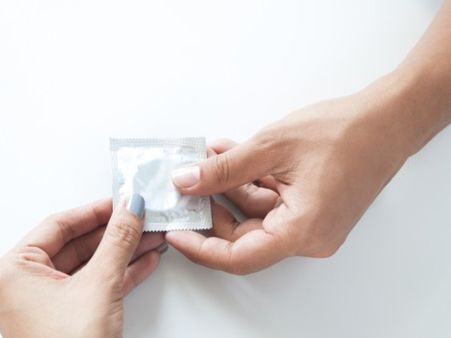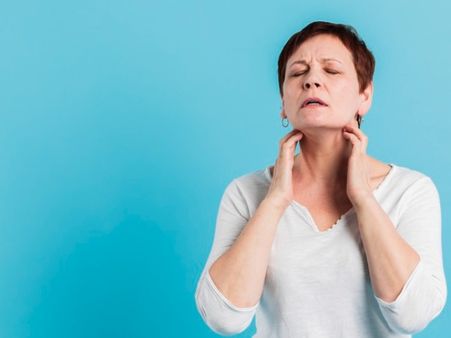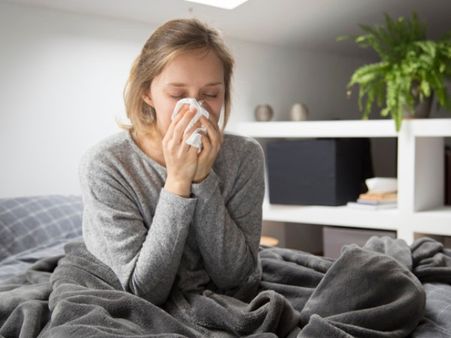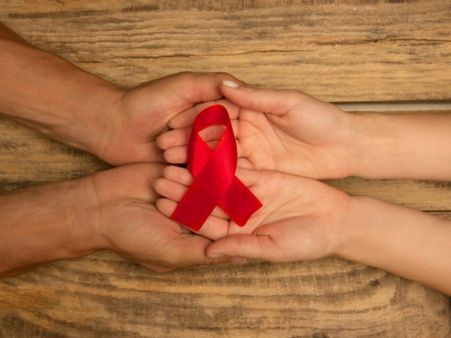Just In
- 2 hrs ago

- 3 hrs ago

- 7 hrs ago

- 8 hrs ago

Don't Miss
- Movies
 Shivangi Joshi New Show: Barsaatein Star Bags Lead Role In BIG Project Opposite Popular YouTuber? DEETS
Shivangi Joshi New Show: Barsaatein Star Bags Lead Role In BIG Project Opposite Popular YouTuber? DEETS - Sports
 On This Day in IPL: CSK Played their First Match at Chepauk, Dhoni scored first 20th Over Six
On This Day in IPL: CSK Played their First Match at Chepauk, Dhoni scored first 20th Over Six - Finance
 Rs 2.20/Share Dividend Declared: 84-Yrs Old Small Cap Tata Co Reports 7.7% Rise In Net
Rs 2.20/Share Dividend Declared: 84-Yrs Old Small Cap Tata Co Reports 7.7% Rise In Net - News
 Goa's Railway Renaissance: BJP's Vision Transforms Connectivity
Goa's Railway Renaissance: BJP's Vision Transforms Connectivity - Education
 Meet Naima Khatoon, First Vice Chancellor of AMU, Know Her Background and Education Qualification
Meet Naima Khatoon, First Vice Chancellor of AMU, Know Her Background and Education Qualification - Technology
 Xiaomi Robot Vacuum Cleaner S10, Handheld Garment Steamer, and Redmi Buds 5A Launched in India
Xiaomi Robot Vacuum Cleaner S10, Handheld Garment Steamer, and Redmi Buds 5A Launched in India - Automobiles
 Nissan Magnite Achieves 1 Lakh Unit Sales Milestone: Consistency Helps
Nissan Magnite Achieves 1 Lakh Unit Sales Milestone: Consistency Helps - Travel
Kurnool's Hidden Gems: A Guide To Exploring India's Lesser-Known Treasures
World AIDS Day: Common HIV Symptoms In Women You Shouldn’t Ignore
Every year, 1 December marks the commemoration of the united fight against HIV and AIDS. 'World AIDS Day' has been raising awareness of the epidemic that kills at least 1 million people every year, since 1988.
The idea behind the international observance is to expunge the outmoded stigma and to show solidarity to the HIV affected. AIDS and HIV infections are one of the biggest problems of the current world, despite the establishment of enhanced and upgraded preventive measures.

The idea of World AIDS Day was initially proposed by James Bunn and Thomas Netter, two public health officials from the World Health Organisation in 1987. Dr Mann, then director of UNAIDS approved the notion and the first-ever World AIDS Day was observed on 1 December 1988.

The theme of World AIDS Day 2020 is Global Solidarity, Shared Responsibility. The global HIV epidemic may be accelerating during the Covid-19 pandemic, as there has been a breakdown in essential HIV services due to the pandemic, making it difficult for health workers to deliver continuous, high-quality HIV services.
On this World AIDS Day, WHO is calling on global leaders and citizens to rally for "global solidarity" to overcome the challenges posed by Covid-19 on the HIV response. In the event of World AIDS Day, let us look at some of the most common HIV/AIDS symptoms in Women.

Common HIV Symptoms In Women
While many HIV symptoms are the same for men and women, certain symptoms are specific to women. As early symptoms of HIV infection can be mild, they are often not given the right attention, which can result in the transmission of the virus on to others from an HIV-positive person [1][2].

1. Infections
As HIV makes the immune system weak, it will be difficult for the body to fight off germs and result in the development of opportunistic infections (OIs) [3]. Some of the common OIs include tuberculosis, oral or vaginal candidiasis and pneumonia. Yeast infections, which are a type of candidiasis, and bacterial infections may be more common in HIV-positive women [4].
2. Menstrual Changes
HIV-positive women can experience changes to their menstrual cycle such as lighter or heavier flow than normal, or in some cases, one may not even get their periods [5]. Severe premenstrual symptoms are also reported.
3. Pelvic Inflammatory Disease (PID)
Pelvic inflammatory disease (PID) is an infection of the female reproductive organs (uterus, fallopian tubes, and ovaries). PID in HIV-positive women may be harder to treat and the symptoms may last longer than usual and may reappear frequently [6].

4. Sexually Transmitted Infections (STIs)
Human papillomavirus (HPV), which causes genital warts, is more active in HIV-positive people, that is, increased outbreaks of sexually transmitted diseases are reported [7]. Treatment may not be effective in this case as the body of an HIV-positive person may not respond to the treatment.
5. Fever And Night Sweats
HIV-positive people may experience low-grade fever, with a temperature between 37.7°C and 38.2°C [8]. As the fever is low, those who are unaware of their HIV-positive status may ignore the symptom. In some people, the fever will be accompanied by night sweats as well.


6. Swollen Glands
Lymph nodes are small structures (contain immune cells) that work as filters for harmful substances, protecting your body from infections and diseases [9]. As HIV begins to spread in the body, the immune system immediately goes into protection mode, causing the lymph nodes to swell (swollen glands).
7. Rashes
Another common HIV symptom is skin problems (rashes and sores) and could be a symptom of HIV itself or the result of concurrent infection or condition [10]. Sores, or lesions, may also form on the skin of the mouth, genitals, and anus.

8. Flu-like Symptoms
In the initial weeks of contracting the virus, not every woman will have symptoms [11]. Some people may have mild flu-like symptoms, such as fever, headache, lack of energy,swollen lymph glands and rashes.
Some additional HIV symptoms reported in women are as follows [12]:
•
Gonorrhoea
•
Chlamydia
•
Trichomoniasis
•
Cervical
cancer
risk

On A Final Note…
Reports point out that the economic disruption caused by the Covid-19 pandemic can make HIV services unaffordable or unobtainable, interfering with supply chains and service delivery.
-
 astrologyWorld AIDS Day 2023: Messages, Slogans, Wishes And Quotes Of Hope, And Compassion
astrologyWorld AIDS Day 2023: Messages, Slogans, Wishes And Quotes Of Hope, And Compassion -
 healthWorld HIV/AIDS Day: Ancient AIDS Treatments: Did They Stand the Test of Time?
healthWorld HIV/AIDS Day: Ancient AIDS Treatments: Did They Stand the Test of Time? -
 healthWorld HIV/AIDS Day: What Is The Difference Between HIV and AIDS?
healthWorld HIV/AIDS Day: What Is The Difference Between HIV and AIDS? -
 healthWorld AIDS Day: 3 Not So Common Ways HIV Can Spread from Person to Person
healthWorld AIDS Day: 3 Not So Common Ways HIV Can Spread from Person to Person -
 pregnancy parenting14 Children Infected With HIV, Hepatitis After Blood Transfusion In UP Hospital: How Did It Happen?
pregnancy parenting14 Children Infected With HIV, Hepatitis After Blood Transfusion In UP Hospital: How Did It Happen? -
 healthSexual Diseases You Might Have Without Symptoms
healthSexual Diseases You Might Have Without Symptoms -
 pulseZero Discrimination Day 2023: Date, Theme, And Why It Is Observed
pulseZero Discrimination Day 2023: Date, Theme, And Why It Is Observed -
 disorders cureWorld AIDS Day 2022: Can Kissing An HIV Positive Person Cause An HIV Infection?
disorders cureWorld AIDS Day 2022: Can Kissing An HIV Positive Person Cause An HIV Infection? -
 wellnessHIV Positive Patients In Haryana To Get Free Health Facilities Like Lab And Radiological Tests
wellnessHIV Positive Patients In Haryana To Get Free Health Facilities Like Lab And Radiological Tests -
 kidsCipla, DNDi Launch 4-In-1 Antiretroviral Treatment For Children With HIV
kidsCipla, DNDi Launch 4-In-1 Antiretroviral Treatment For Children With HIV -
 disorders cureNew Study Signals The Development Of Unique Genetic Treatment For HIV
disorders cureNew Study Signals The Development Of Unique Genetic Treatment For HIV -
 disorders cureOver 17 Lakh People Contracted HIV In India In Last 10 Years By Unprotected Sex: RTI Reply
disorders cureOver 17 Lakh People Contracted HIV In India In Last 10 Years By Unprotected Sex: RTI Reply


 Click it and Unblock the Notifications
Click it and Unblock the Notifications



